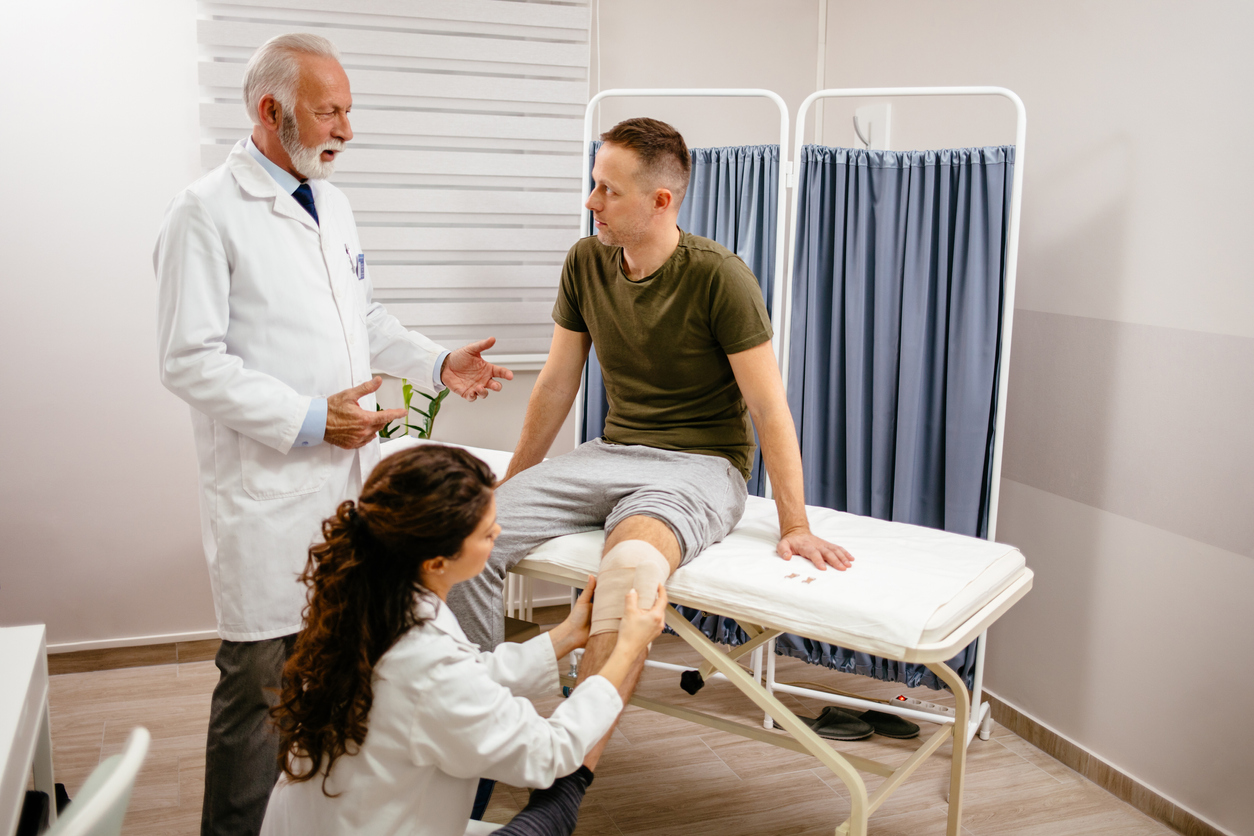
Whether you have performed squatting motions or knee rotations, or if you’ve perhaps recently played sports that involve making sudden stops and turns with your legs and knees, you may have torn a meniscus in your knee. Each knee has two menisci, which are each C-shaped sections of cartilage that provide a cushion between your shinbone and your thighbone.
A forceful twisting motion or sudden pivots and stops can cause a torn meniscus. Plus, over time, the age-related degeneration of the knee cartilage also makes it prone to tearing even with little or no trauma or force.
Symptoms of a Torn Meniscus
A torn meniscus is one of the most common injuries orthopedic doctors diagnose and treat every day. Both athletes and non-athletes alike can tear a meniscus.
Some of the main symptoms of a torn meniscus include the following:
- Hearing a popping sound in the knee
- Pain that worsens when twisting or rotating your knee
- Localized swelling
- Stiffness
- A limited range of motion
- Difficulty extending your knee fully
- A feeling of your knee being locked in place
- A feeling of your knee giving out
Age-related changes to the knee tissues, including the cartilage which comprises the meniscus, could make something as simple as getting in and out of your car traumatic to the soft tissue. That means you could even tear a meniscus just by getting in and out of your car. In some cases, especially in seniors, they may experience no symptoms of the gradual tearing of their meniscus. Obesity can also increase a person’s risk of developing meniscus tears.
How Is My Knee Pain Diagnosed?
An orthopedic doctor will be able to determine the source of your knee pain relatively quickly and easily, and the physician can recommend treatment that will work for you. A torn meniscus may respond to conservative treatment or may require surgery, depending on the severity of the tear.
The meniscus only has a blood supply in the outer part, the rest of which has no blood supply to enable it to heal on its own. For this reason, an image-guided diagnosis is often necessary to determine the location of the tear.
Seek medical attention if your knee locks in place, because this usually indicates that the meniscus may have become torn and displaced. With a locked knee, you are unable to sit down, stand up, walk, or fall asleep without pain. Once treated, normal knee function can be restored and pain can be eliminated or greatly reduced.
Orthopedic Doctor for an Injured Knee in Austin, TX
Dr. Carolyn Hyde of All-Star Orthopedics of Austin has diagnosed and treated many patients with meniscus tears. Since 2009, Dr. Hyde has provided superior orthopedic and sports medicine services to her patients across the area.
For a torn meniscus, Dr. Hyde usually recommends conservative treatment methods such as wearing a knee brace, using custom shoe inserts, and participating in physical therapy. If needed, she can perform highly advanced arthroscopic surgery as an outpatient procedure for a faster recovery.
To schedule an appointment with Dr. Hyde, call us today at (512) 346-4933 or fill out our convenient online request form. We look forward to serving you!





